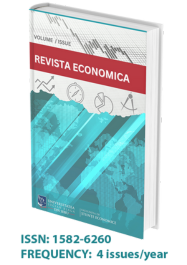
ANALYSIS OF THE KEYNES’ ECONOMIC EQUILIBRIUM FROM THE IS-LM MODEL PERSPECTIVE
OPREANA Alin, Lucian Blaga University of Sibiu
Abstract:
In a first phase, during the Great Depression, historical events favored Keynesian interpretation of the scarce aggregate demand theory and of the necessity for a demand management through a state intervention mechanism in order to stabilize the economy. Therefore, economists were ready for a different model and they paid attention to a new and more plausible perspective than the laissez-faire theory. In the late '30s, Hicks and Hansen were researching the possibility of obtaining a simultaneous equilibrium situation on the goods market and on the money market, which lead to the IS – LM equilibrium model. This model allowed the first precise formulation of a set macroeconomic policy proposals, as the budget policy acts on the IS curve, and the monetary policy acts on LM curve. This paper addresses the problem of achieving a combined equilibrium of the markets in terms of the IS-LM model. Thus, John Hicks and Alvin Hansen developed a new model using the Keynesian macroeconomic theory, and the IS-LM is of great importance for the general equilibrium theory especially in the current economic situation.
Keywords: equilibrium, IS-LM model, Keynesian cross,economic policies
JEL Classification: E12, E17
Volume: 60.1, Issue: 1
Pages: 73 - 93
Publication date: , 2012
Download the article: http://economice.ulbsibiu.ro/revista.economica/archive/RE%201-60-2012.pdf
OPREANA Alin, 2012, ANALYSIS OF THE KEYNES’ ECONOMIC EQUILIBRIUM FROM THE IS-LM MODEL PERSPECTIVE, Revista Economică, Lucian Blaga University of Sibiu, Faculty of Economic Sciences, vol.60.1(1), pages 73-93,

All content is licensed under the
Creative Commons Attribution 4.0 International License (CC BY 4.0)
.








